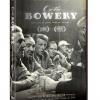Search the Community
Showing results for tags 'chautauqua'.
-
Chautauqua in Arkansas, 1919 Photo: LOC The Chautauqua Movement grew out of the Chautauqua Literary and Scientific Circle. As its members and graduates spread the ‘chautauqua’ idea, many towns, especially in rural areas where opportunities for secondary education were limited, established “chautauquas.” Chautauquas had a degree of cachet and became shorthand for an organized gathering intended to introduce people to the new, great ideas and issues of public concern. “Independent assemblies,” those with permanent buildings and staff could be found throughout the U.S. by 1900, but were mainly concentrated in the Midwest. After 1900, the “circuit chautauqua” became the principle expression of the movement. At the height of the Chautauqua Movement, around 1915, some 12,000 communities had hosted a chautauqua. Many of the lecturers and performers were contracted by chautauqua agencies, the most notable of which was the Redpath Agency in Iowa. The quality of the offerings varied from Vassar-educated lecturers and Shakespeare to animal acts and vaudeville farce. The Chautauqua movement nearly died in the mid-1930s. Most historians cite the rise of car culture, radio, and movies as the causes, but there were several other important yet subtle reasons for the decline. One reason was the sharp increase in fundamentalism and evangelical Christianity in the 1920s; the bland, non-denominationalism exhibited at most chautauquas couldn’t accommodate these impulses. Many small independent chautauquas, however, became essentially camp meetings or church camps. Another seemingly contradictory influence was the rise of the liberated, educated woman. Chautauquas functioned for many lower- and middle-class women much as elite women’s colleges did for upper-class women. They were training grounds from which women could launch “real” careers. When professional and educational opportunities increased, women’s interest in chautauquas dwindled. Finally, the Depression itself made chautauquas economically impossible for organizers and audiences. Today, chautauquas are experiencing a small renaissance. People are discovering that lifelong learning is one of the keys to living a happy, fulfilling life. Throughout North America, existing chautauquas are thriving and ones from the past are being resurrected. Source: www.chautauqua.com <><><><> Daniel D. Teoli Jr. Archival Collection Daniel D. Teoli Jr. Small Gauge Film Archive Daniel D. Teoli Jr. Advertising Archive Daniel D. Teoli Jr. VHS Video Archive Daniel D. Teoli Jr. Popular Culture Archive Daniel D. Teoli Jr. Audio Archive Daniel D. Teoli Jr. Social Documentary Photography



